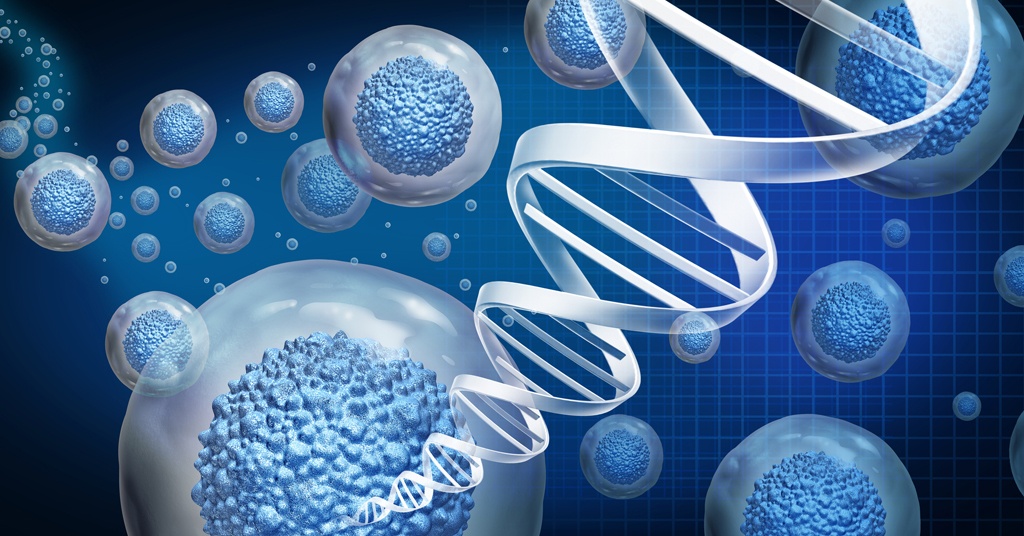Web Design and Digital Marketing Strategies for Cell and Gene Therapies

Cracking the Code: Innovative Web Design and Digital Marketing Approaches for the Cell & Gene Therapy Landscape
Cell and gene therapies represent a revolution in healthcare, with the potential to cure previously untreatable diseases and conditions. However, these cutting-edge treatments face significant challenges in marketing to both patients and healthcare professionals (HCPs). This blog post will delve into these challenges and outline web design and digital marketing strategies to educate both physicians and patients on the therapy. We will explore the use of branded websites, unbranded websites, SEO, social media, video, infographics, paid digital media, and content marketing and AI as tools for effective communication and education.
Challenges in Marketing Cell & Gene Therapies
Complexity of the Therapy
One of the main challenges in marketing cell and gene therapies is their complexity. These treatments involve altering the genetic material within a person’s cells to treat or prevent disease. Consequently, it can be difficult for patients and HCPs to grasp the science behind these therapies and understand their benefits and potential side effects.
High Costs and Accessibility
Cell and gene therapies are often expensive, and their costs can be prohibitive for some patients and healthcare systems. This can lead to skepticism from both patients and HCPs, who may be reluctant to recommend or consider these treatments due to their high costs and limited accessibility.
Regulatory Hurdles and Ethical Concerns
The evolving regulatory landscape for cell and gene therapies presents another challenge. Regulatory bodies are still developing guidelines for these therapies, leading to uncertainty about their approval and availability. Additionally, ethical concerns surrounding the manipulation of genetic material can make some patients and HCPs hesitant to embrace these therapies.
Misinformation and Public Perception
Misinformation about cell and gene therapies is widespread, and negative public perception can hinder their acceptance. This can be fueled by sensationalist media coverage, unfounded fears, and a lack of understanding of the science behind these therapies. It is essential to address these misconceptions and provide accurate, accessible information to both patients and HCPs.
Web Design and Digital Marketing Strategies for Cell & Gene Therapies
To overcome these challenges, it is crucial to develop targeted digital marketing strategies that effectively educate and inform both patients and HCPs. The following are key approaches to consider:
Branded Websites
Patient-focused branded websites
Creating a patient-focused branded website can be a powerful way to provide information about cell and gene therapies directly to patients. These websites can offer educational resources, testimonials, and multimedia content that is tailored to the needs and concerns of patients.
HCP-focused branded websites
HCP-focused branded websites can serve as a hub for healthcare professionals to access the latest research, clinical trial data, and treatment guidelines for cell and gene therapies. These websites can also provide resources such as case studies, webinars, and expert opinion articles to help HCPs better understand the therapies and their applications.
Unbranded Websites
Unbranded websites can be a valuable tool for providing unbiased, educational information about cell and gene therapies without the influence of a specific brand. These websites can focus on the science, benefits, and potential risks of cell and gene therapies, providing a more objective view for both patients and HCPs.
Search Engine Optimization (SEO)
SEO is crucial in ensuring that your website ranks high in search results when people search for information about cell and gene therapies. By optimizing your website content with relevant keywords, you can increase your website’s visibility and reach a wider audience. This can help you establish your brand as a trusted source of information for both patients and HCPs.
Social Media
Patient-focused social media campaigns
Social media platforms such as Facebook, Twitter, and Instagram can be used to connect with patients and share educational content about cell and gene therapies. By creating patient-focused social media campaigns, you can share educational content, news, and success stories related to cell and gene therapies. Engaging with patients on these platforms can help build trust and foster a sense of community. It is important to use a mix of content formats, such as images, videos, and infographics, to keep the audience engaged and informed.
HCP-focused social media campaigns
HCP-focused social media campaigns can provide healthcare professionals with the latest research, clinical trial data, and expert opinions related to cell and gene therapies. LinkedIn and Twitter are particularly useful platforms for reaching HCPs. By sharing relevant, high-quality content, you can establish your brand as a trusted source of information and facilitate professional discussions around these therapies.
Video
Video content can be an effective way to explain complex concepts related to cell and gene therapies. By using animations, interviews with experts, and patient testimonials, you can break down the science behind these therapies and present it in an engaging, easy-to-understand format. Videos can be shared on your website, social media platforms, and even within targeted paid digital media campaigns.
Infographics
Infographics are a visually appealing way to present complex data and information related to cell and gene therapies. They can help both patients and HCPs understand the science, benefits, and potential risks associated with these treatments. Infographics can be shared on your website, social media platforms, and in email campaigns to help educate and inform your target audience.
Paid Digital Media
Patient-focused paid digital media campaigns
Targeted paid digital media campaigns can help you reach a wider audience of patients who are interested in or potentially eligible for cell and gene therapies. You can use platforms such as Google Ads and Facebook Ads to promote your content, targeting users based on their search queries, interests, and demographics. It is essential to monitor your campaigns’ performance and adjust your targeting and messaging to optimize results.
HCP-focused paid digital media campaigns
Paid digital media campaigns targeting HCPs can help you promote your educational content, webinars, and events related to cell and gene therapies. Platforms such as LinkedIn Ads and medical industry-specific advertising networks can help you reach a highly relevant audience of healthcare professionals. Monitoring and optimizing your campaigns based on performance data is key to ensuring the success of your paid digital media efforts.
Content Marketing
Content marketing involves creating and sharing valuable content to attract, engage, and retain your target audience. For cell and gene therapies, this can include blog posts, whitepapers, webinars, podcasts, and more. By providing high-quality, informative content that addresses the needs and concerns of both patients and HCPs, you can establish your brand as a trusted source of information and foster long-term relationships with your audience.
Leveraging Artificial Intelligence (AI) in Digital Marketing for Cell & Gene Therapies
Artificial Intelligence (AI) has become an integral part of many industries, including digital marketing. AI can help overcome the challenges faced in marketing cell and gene therapies by providing personalized and data-driven insights. This section will discuss how AI can be incorporated into various digital marketing strategies to enhance education and outreach efforts for both patients and HCPs.
AI-driven Content Creation
AI-driven content creation tools can help generate high-quality, informative content on cell and gene therapies. These tools can analyze vast amounts of data, identify trends, and generate insights to create relevant and engaging content. By using AI-generated content, marketers can save time and resources, allowing them to focus on other aspects of their marketing campaigns.
Chatbots and Virtual Assistants
Integrating AI-powered chatbots and virtual assistants into your website or social media platforms can enhance user experience by providing instant, personalized support. Chatbots can help answer common questions about cell and gene therapies, guide users to relevant resources, and even schedule appointments or facilitate communication with HCPs. This can help improve patient engagement, satisfaction, and trust in your brand.
Predictive Analytics
AI-driven predictive analytics can analyze historical data, user behavior, and trends to forecast future outcomes and identify potential opportunities in marketing cell and gene therapies. By leveraging these insights, marketers can optimize their marketing strategies, targeting the right audience with the right message at the right time. This can lead to more effective and cost-efficient marketing campaigns.
Sentiment Analysis
AI-powered sentiment analysis can help marketers understand the public perception of cell and gene therapies by analyzing social media posts, comments, and reviews. By identifying trends in sentiment and common concerns, marketers can tailor their messaging and content to address these issues and improve public perception.
Personalization and Targeting
AI can help create personalized marketing experiences for both patients and HCPs by analyzing user data and preferences. By utilizing AI algorithms, marketers can deliver personalized content, offers, and recommendations to users based on their interests, demographics, and online behavior. This can lead to higher engagement rates and improved user satisfaction.
AI-driven Advertising Optimization
AI can play a significant role in optimizing paid digital media campaigns for cell and gene therapies. AI algorithms can analyze campaign performance data, identify patterns, and automatically adjust targeting, bidding, and ad placements to improve the overall effectiveness and efficiency of the campaign. This can lead to better ROI and more successful marketing efforts.
Pioneering Progress: The Role of Digital Marketing in Accelerating Cell & Gene Therapy Adoption
Marketing cell and gene therapies presents unique challenges due to their complexity, high costs, regulatory hurdles, and potential ethical concerns. By employing digital marketing strategies such as branded and unbranded websites, SEO, social media, video, infographics, paid digital media, and content marketing, you can effectively educate and inform both patients and healthcare professionals about these groundbreaking treatments. By addressing misconceptions and providing accurate, accessible information, you can help to build trust and drive the adoption of cell and gene therapies in the healthcare industry.
emagineHealth is the digital-first, AI-powered agency for healthcare and biopharma. Let’s work together to overcome your cell & gene digital marketing challenges.

Paid Digital Media for Healthcare & Biopharma
In our newest ebook, Paid Digital Media for Healthcare & Biopharma, we discuss how to get in front of your ideal audience, the importance of targeting the patient and HCP journey, how to determine which platforms to focus on, and more.